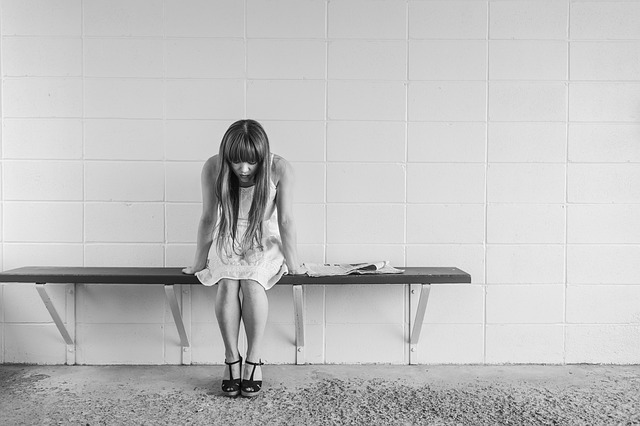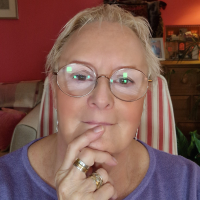
I want to talk about “The Void.” Many of us know this place. I want to share some thoughts about it, why we fall into it, and how to get out.
Let me give you an example. Let’s talk about “Marian.”
Marian sat forward on the edge of her chair. Her hands were clasped together so tightly that I could see how white her knuckles were as she tried to hold herself together. It was the first time we’d met.
“Oh, I promised myself I wasn’t going to get upset!” She flung the words out as if she despised herself, as if getting upset was the ultimate betrayal. A weakness, a flaw, a wound.
I told her gently that it was fine to take her time, and pointed out the box of tissues on the table nearby. I suspected she wouldn’t use them. I was right.
To let another in.
Marian’s eyes glistened, as she began to tell me that she didn’t know what was the matter with her. That she’d been weepy lately, and had found herself losing her temper, snapping at people. That this was so out of character that she was ashamed and alarmed.
She flicked away any tears that managed to escape with her hands as soon as they appeared, trying to stem their flow by pressing the tips of her fingers into the corners of her eyes. Marian was going to do this alone. To accept a tissue would be to accept help, kindness.
I asked her what would be in character? How she felt she ought to be? And so she began to tell me her story…
I heard about a little girl who, aged seven, watched her mummy being taken to hospital, where she stayed for 10 months. For some time, her mummy had been acting strangely, weeping and then angry, saying “weird” things, convinced that everyone was going to hurt her, that the world was dangerous. Once, Marian had gone running all over the house looking for her to find her hiding under a blanket in the wardrobe.
Her mother would cut herself, and then spend a long time washing and bandaging the wound. Sometimes, she would just stare straight ahead, unresponsively, even when Marian tried to get her attention or cheer her up.
The words didn’t come easily, and this woman sitting opposite me told me her story in a voice devoid of feeling, flat, as if what she was describing didn’t affect her at all. I observed aloud that she was telling me some pretty frightening and upsetting things, which must have been bewildering for a little girl of seven, but that I had no sense of there being any feelings attached to the memories, and that I wondered where the feelings had gone.
She looked shocked. Then puzzled. Then she laughed. Not a humorous laugh; a hard and brittle laugh, wounded and stifled. Then she said to me, hand half over her face, “Oh but to say that there were feelings would be to have to say that I exist! I find it very frightening to think that I might actually exist.”
We talked lots about existing and not existing. About the ambivalent feelings that Marian had about being seen or known, and about the comfort of being invisible.
And eventually, as I had known we must, we got to “the void.” What Marian dreaded most was falling into “the void.” If she allowed herself to feel, and to exist, that would be where she would end up.
We therapists talk about “the void” a lot, because many of the people who come to talk with us struggle with this place—which feels to be a real and tangible place that any one of us can fall into if we go too near the edge. And of-course many of us have ourselves struggled with it too.
Many of us are familiar with the void. It’s a dark place of utter aloneness. We dread falling into it because the paralysis we experience, the bleakness and despair, when we are in there is one of the most terrifying experiences a human being can have
The key elements of that place include deep depression, hopelessness, despair, self-loathing, terrifying isolation and aloneness, guilt and a sense of having done irreparable damage, a sense of being worthless and unlovable, a sense of emptiness, of being nothing but a shell, a fraud, and a sense of there being no help. It is an appalling place.
And because Marian had experienced “no help” as a child, she expected no help now. And always. And no help means aloneness. Nothing and no-one. And that means the void.
It helped Marian to come to understand that “the void” was a memory place, and not a real place now. It was the place of psychic aloneness that she had experienced as a little girl when she needed help and comfort, and her mother was unable to offer her what she needed because she, herself, had fallen into the void. It was a place which could be triggered by current experience, but it was a memory only, no longer a real here and now place.
Above all, what made the ultimate difference, and brought about the major transformation, was understanding that the void is an illusion. It is a place where we feel separate, cut off, without connection, on our own with no help and no witness
If we know this experience too, it helps to remember:
• The void is a place of forgetting our oneness and belonging, and of believing the illusion of separateness.
• The void is the product of the ego, and therefore fear-based. It doesn’t exist when we remember the love we all are.
• When we find love and compassion in ourselves, and live in the heart, the void disappears. It is both our challenge and our relief.
• We are never invisible, never not known. We are the result of the love of thousands, who have always known us, and always will.
• And, we are never alone. We are surrounded every moment by more help, power, creative resource, love and compassion than we can possibly imagine.
When we allow help, allow the universe to speak to us and hold us, it does and it will. Always. Every part of us says no, every memory shouts no-one will catch me, no-one hears me, no-one cares.
But it is memory speaking. The illusion of separateness that memory is perpetuating.
It wasn’t true back then—the universe was always with you as you lived the beginning you’d chosen, brave soul that you are. And it is with you now.
And for those of us who find ourselves with the privilege of walking alongside fellow souls struggling with these dark and difficult places, it can perhaps be helpful to understand something of what the landscape looks like through their eyes. And to reach out, as the eyes and hands and arms of the universe in human form.
It can also help to appreciate what strong and courageous souls these are, those who have chosen to experience that landscape. In oneness. With love. For the compassionate expansion of us all.
And consequently, we may find it in our hearts, rather than telling them to pull themselves together, to bow in awe and say, “Namaste.”
Relephant read:
The Cultivation of Compassion.
~
Author: Janny Juddly
Editor: Travis May
Image: Pixabay











Read 5 comments and reply